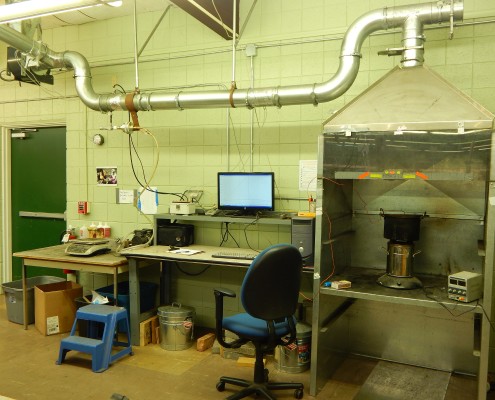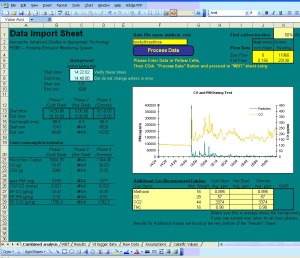Laboratory Emissions Monitoring System (LEMS)
“The Portable Emissions Monitoring System (PEMS) that we acquired from Aprovecho Research Center has proven to be invaluable in our daily activities. In addition to its usefulness in the evaluation of stove models and design modification, the real-time data collection and display allows us to identify influences in fuel feeding during our teaching activities. The portable nature of the equipment allows us to use it in the local communities to evaluate true emissions during normal cooking activities. Finally, the equipment is reasonable in terms of costs which will, perhaps, allow us to purchase an additional PEMS to help us comply with the demand for client evaluations and our student research activities.”
Aprovecho Research Center manufactures and sells the LEMS: the Laboratory Emissions Monitoring System. More than fifteen stove labs around the world use the LEMS, most use it every day to test and improve stoves. The LEMS has been run side by side with the Environmental Protection Agency system and results were comparable.
The solid sheet metal hood and large variable speed blower fan allow the LEMS to accurately measure the emissions of stoves ( CO, CO2, PM2.5, black carbon) ranging from tiny TLUDs to giant institutional stoves. PM 2.5 is measured in real time, and shown on the computer screen, and with pre and post weighed gravimetric filters. The LEMS has been in use for ten years and meets all IWA requirements. Simple upgrades allow for compliance with the recently released ISO standard.
- A new chimney stove testing cap makes it easier to test chimney stoves.
- The LEMS now measures black carbon.
- The new sensor box was re-designed and improved in 2016.
- The software is also easier to use.
The LEMS manual provides specifics on LEMS design, theory, and operation. See our video gallery for step-by-step videos on how to assemble, use, and calibrate the LEMS.
Contact Sam Bentson for more information.
The LEMS is in use by cook stove researchers around the world.
The analysis software is written in Excel and uses macros.
USER-DEFINED TESTS – The software can be adapted to suit any test that is desired.
Data Acquisition software consists of a simple data streaming program and graphing software in Java, provided.
Processing software is written in Visual Basic for Microsoft Excel 2003 for Windows and consists of a simple spreadsheet that incorporates and processes data. A Windows laptop with Microsoft Excel must be available for running the system. Macros must be enabled in the Security settings for software to function.
Calculations are consistent with WBT 4.2.3.
Available add-on options for the LEMS include:
The LEMS analysis software is compatible with Windows and can process data from either a Water Boiling Test (WBT) or a Controlled Cooking Test (CCT) using the automated data processing spreadsheets. Personnel with reasonable computer experience can run the LEMS, which comes with a comprehensive instruction manual.




